As a longtime instructional designer, I can’t stress enough just how important it is to deliver high-quality audio content for our learners. Clear, crisp, and professional voiceovers can make or break a course, and the microphone you choose plays a massive role in this.
Simply put, not all voiceover microphones are created equal. It’s not just about the price tag; it’s about capturing the nuances of your voice, conveying emotions, and ensuring that your content resonates with your audience. Different microphones are better for different kinds of voices, scripts, and applications. For example, if you have a deep voice, you’ll want a microphone that can handle low frequencies. If you’re doing a lot of narration with dynamic range, you’ll want a microphone that can handle a wide range of sounds and volume levels.
I’ve reviewed and ranked the best microphones for voice over work based on a variety of factors, including audio quality, budget, durability, and more (click here to learn about our entire Editorial Process & Methodology for product reviews). I even looked at the setups of famous podcasters and voice over artists to figure out which mics the top starts in the field are using.
My Quick Suggestions for Voice Over Microphones
If you’re on a tight schedule and don’t have time to read this complete, in-depth guide, check out my best picks of voice recording microphones for various scenarios:
- Blue Yeti – a plug-and-play USB mic for beginners
- Rode Procaster or Shure SM7B – for recording long narrations and audiobooks; both are good at noise reduction and work in spaces with poor sound absorption
- Neumann TLM 102 or Neumann TLM103 – high-end voice over microphones for professional work of the highest sound quality
The Complete List of My Favorite Voice Over Microphones in 2024
After reviewing dozens upon dozens of mics, I’ve come up with this master list of the best voice over microphones, including options at every price point. Later in this article, I’ll go into much more detail about each mic on this list:
|
1. Blue Yeti
A feature-packed USB mic for amateurs offering a clear sound. Category: condenser microphones [USB], low cost
My choice among low-cost USB mics
|
Check price → | |
 |
2. Blue Snowball iCE
Solid USB condenser mic for home or office use. Great ease of use and value for quality. Category: condenser microphones [USB], low cost
|
Check price → |
 |
3. Rode NT-USB
Studio-Quality USB Cardioid Condenser model for amateurs and pros alike. Comes with a tripod stand, pop shield, and ring mount. Category: condenser microphones [USB], low cost
|
Check price → |
 |
4. Audio-Technica AT2020USB+
An inexpensive USB mic for voice acting, requires no pre-amp, comes with self-monitoring. Category: condenser microphones [USB], low cost
|
Check price → |
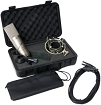 |
5. Harlan Hogan VO
Good for voiceovers, includes a hard case, shockmount, XLR cable. Category: condenser microphones, low cost
|
Check price → |
 |
6. SE Electronics sE2200a
SE large-diaphragm mic provides a warm sound, covers versatile voices. Category: condenser microphones, low cost
|
Check price → |
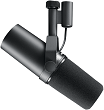 |
7. Shure SM7B
Cardioid mic with a pop filter. Flat wide-range frequency response! Category: dynamic microphones, mid-range price
My choice among dynamic mics!
|
Check price → |
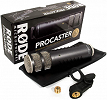 |
8. Rode Procaster
Dynamic vocal microphone with impressive noise reduction, multipurpose and affordable Category: dynamic microphones, low cost
|
Check price → |
 |
9. Heil PR-40
Dynamic Studio Microphone for VO pros, wide frequency, and a solid competitor to condenser mics Category: dynamic microphones, mid-range price
|
Check price → |
 |
10. Electro Voice RE-20
Celebrated dynamic professional mic with great sound quality. With a pop filter and shockmount! Category: dynamic microphones, mid-range price
|
Check price → |
 |
11. Neumann TLM 102 MT
Superb condenser cardioid mic for home and studio recording, comes with a standmount Category: condenser microphones, mid-range price
My choice among mid-range condenser mics!
|
Check price → |
 |
12. Rode NTK
This tube mic delivers a broad range for a decent price. Category: condenser microphones, mid-range price
|
Check price → |
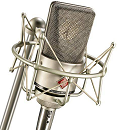 |
13. Neumann TLM103
Celebrated cardioid mic for voice over amateurs and pros, comes with a large diaphragm and exceptional noise reduction Category: condenser microphones, high-end price
My Choice in the High-End!
|
Check price → |
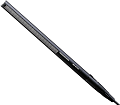 |
14. Sennheiser MKH416-P48U3
The gold standard! Supercardioid shotgun tube condenser for recording pros. Category: condenser microphones, high-end price
|
Check price → |
 |
15. Neumann U87
Switchable studio microphone, three directional patterns. Extremely sensitive and efficient! Category: condenser microphones, high-end price
|
Check price → |
Contents:
- 5 steps to pick your microphone →
- Best USB microphones (condenser) →
- Best budget microphones (condenser) →
- Best dynamic microphones →
- Best mid-range mics (condenser) →
- Best professional microphones (condenser) →
- Other must-haves →
- Reader’s choice →
- Comments (18) →
If you’re looking to purchase a microphone for voice overs or other recording tasks and can’t decide which one to get, this is a one-stop reference point for you. Whether you’re a seasoned pro or a beginner taking online voice over classes, this info will help you out.
“The costlier the better” doesn’t really apply when finding the best microphone for voice over work; it’s not about the price. The majority of decent VO microphones are available in the $100-400 range, and they may work better for your task than a high-end $1,000 mic.
A microphone’s ability to capture the nuances of your voice, to faithfully convey the emotions behind your words, and to seamlessly integrate with the narrative atmosphere is where its true value lies. Rather than fixating on the price alone, consider the harmony between your voice’s timbre and the microphone’s sonic characteristics. A mid-range microphone meticulously tailored to your vocal nuances can outshine a high-end counterpart that wasn’t crafted with your voice in mind.
Justin David Proctor, an audio recording expert and Grammy Award winner, echoed this sentiment, saying “I like to keep it simple [when choosing a microphone]. I’m not a bells and whistles kind of guy. Is it from a company that’s been doing this for a while so they’ve really got their designs down?”
A fairly simple device, the microphone has a bunch of important attributes that you need to understand before considering specific options. You’ll need to choose between USB or XLR, condenser or dynamic, large or small diaphragm, cardioid or non-cardioid, etc.
In this article, I’ll go through the basics to make sure further recommendations make sense for beginners. Are you a VO pro? No worries — you’ll also learn a thing or two and get a few tips for an extra studio mic for voice acting or an upgrade 😉
5 steps to pick your microphone for voice over work
To choose a voice acting mic wisely, let’s answer some important questions about the qualities and use cases you may require.
Step 1. Choose a connection type: USB or XLR
First, you need to decide on connectivity. You can record great voice overs with both digital USB mics and traditional analog XLR.
USB mics are a more compact option, good for entry-level VO actors. XLR is more versatile and professional, yet more complex in terms of use.
USB
A USB voice over mic is a ready-to-use recording solution implying a minimum learning curve and a moderate price.
There are some great benefits as well as drawbacks to using USB mics…
Pros:
- Plug’n’play setup
- Compact all-in-one solution (includes portable audio unit)
- Affordable (no need to buy audio unit, etc.)
Cons:
- Limited sound quality by design, mid-range tops
- Aimed at the entry-level segment
- Unable to upgrade each part individually
- Difficult troubleshooting: The issue may be in any part (the mic itself, cables, audio interface, etc.) and may be hard to identify
- Works with a single computer only: one computer, one microphone.
USB mics are best for:
- Non-commercial, lectures, podcasts, etc.
- Lightweight travelling with a laptop
- Recording at home, office, hotel
XLR
An XLR mic is a versatile, upgradable solution. It’ll require additional gear, such as an audio interface and XLR cable.
Pros:
- The entire quality spectrum: from cheap and simple to premium
- More upgrade options (cables, audio interfaces, etc.)
- Record two or more mics simultaneously
- Interoperability with other devices that support XLR (camcorders, portable recorders, etc.)
Cons:
- Requires extras (audio interface unit, cable, stand, etc.)
- More expensive and time-consuming due to extras
- More cables on your studio desk!
XLR mics are best for:
- Home and professional studios
- Recording outdoors with a camera or portable recorder
- On-stage use, presentations at expos, hosting events
Q: What does XLR mean?
XLR is a professional analog audio interface used for microphones. An XLR cable has 3-pin connectors on both ends. One connector (female) goes to the microphone, the nother (male) goes to an audio interface, mixing panel, camera or portable recorder.
Q: What’s the main difference between XLR and USB?
USB microphones have a built-in portable audio interface. Other than that, there is no principal difference. Some microphones come in both modifications, but the vast majority of mics are XLR-only, because they’re more in demand in the professional audio industry.
Q: Can I use a USB mic with an iPad?
It depends on the particular microphone’s driver. Some USB mics can work with iPads and Android tablets, but most likely they’ll require additional adapters. It also drains the device’s battery quicker.
Q: When are USB mics a viable choice?
For very specific, mainly non-commercial needs, where output quality isn’t a critical factor, USB mics may work just fine. If you prefer to keep things simple and don’t want to carry a pack of cables and audio devices along with your laptop, a USB mic is a soft option. Just make sure you won’t need to upgrade or scale your setup. Should you need more flexibility, consider a universal XLR mic for voice over work.
Step 2. Choose a microphone type: Condenser or Dynamic
Two common microphone types are dynamic and condenser. They both do the same job of transducing sound into electrical impulses, but they have different operating principles.
Dynamic
Most mics are dynamic. They can be as small as in your smartphone or as big as studio mics. This type is universal and can be used in many applications.
Pros:
- Smoothens voice imperfections
- Sturdy and durable
- Doesn’t require phantom power (+48V on your audio)
- Works in noisy rooms and isolates your voice
Cons:
- Less sensitive
- Narrower dynamic range (difference from quiet to loud sounds)
- Proximity effect (low-frequency boost when speaking closely to the mic, well-known from radio broadcasts)
Best for: Long narrations and audiobooks (doesn’t require as much mouth click cleanup), home studios without acoustic treatment, outdoor recording, streams, broadcasts, interviews, live events.
Condenser
Condenser mics are specifically designed for studio use and better suited for VO recording. Bigger diaphragm and more sensitivity help to achieve a rich-sounding natural voice.
Pros:
- Natural frequency response
- Wider dynamic range
- More sensitivity
Cons:
- More meticulous acoustic treatment of your room
- You’ll have to take extra care of background noises (fans, air conditioning, devices, neighbors, kids and dogs:)
- Harder to use without practice
- Indoor use only
- Fragile, can be damaged by moisture and dust.
Best for: Professional soundproof studios or closets; voice overs, audiobooks, podcasts, etc.
Q: What is phantom power?
It’s a switch on your audio interface that provides 48V direct current through an XLR cable to power the capacitor of a condenser microphone. It’s not needed for dynamic microphones.
Q: How can I tell a dynamic from condenser mic visually?
There is a false opinion that condenser mics are always bigger, which is not true. Still, condenser mics can’t be very small (like in a cell phone).
Q: What’s the real difference between condenser and dynamic mics?
Consult the consumer selection guide above for the practical differences. From a technical standpoint, there is a different operational principle. Dynamic mics work with an induction coil, while the other type uses a capacitor to capture and transduce sound.
The best recommendation would be to have both condenser and dynamic microphones in your studio. Traditionally, condenser is a better choice for recording voice overs, but it’s sensitive to room and voice imperfections, which makes it an optimal choice for studio use only. If your scenario involves recording audiobook narrations in a home studio with non-ideal acoustic conditions, or you’re planning to carry it around with you a lot, then a dynamic mic is better.
Step 3. Choose a diaphragm size: small or large
Like a human ear, each mic has a diaphragm that captures sound waves. Traditionally, VO actors prefer mics with larger diaphragms because they produce a richer tone.
Small diaphragm
Captures low-mid to high frequencies and capable of withstanding higher sound pressure; this makes it a good choice for some circumstances. Picks up less room noise. Also used on narrowly directional shotgun mics.
Pros:
- Portability
- Captures louder sounds (up to 120db)
- Speak closer to the mic without distortion
Cons:
- Less sensitivity
- Less low frequencies
Best for: VO in untreated rooms, presentations, live events, interviews, etc.
Large diaphragm
Captures all audible sound frequencies almost equally. Produces a warm and deep voice even without post processing.
Pros:
- Captures all audible frequencies including low
- Wider dynamic range (difference from soft to loud sounds)
- Better sensitivity
Cons:
- Larger microphone size
- More fragile
- Distorts louder sounds and if you speak closely
Best for: Studio use, voice overs, audiobooks, podcasts, etc.
Step 4. Select a microphone pattern
How do you read a pattern diagram? A mic pattern is a sensitivity map shown on a circular diagram. It’s a top-to-bottom view of a recording space with the center at the microphone facing 12 o’clock.
Cardioid
A regular one-directional microphone. The most suitable pattern for voice-overs.
Properties:
- Records direct sounds
- Records side sounds
- Doesn’t record back sounds
Other patterns are used for specific cases.
Subcardioid
Picks up more environmental sounds and gives more room presence, including early echoes.
Properties:
- Records direct sounds
- Records wider side sounds
- Records reduced back sounds
Omnidirectional
Omnidirectional microphones record sounds evenly from all directions. Wherever the sound comes from, it’ll record equally.
Properties:
- Records everything around equally
Hardly a good fit for voice overs.
Bi-directional
Great choice for chats and dialogues with people sitting on either side of the microphone (face to face)
Properties:
- Records direct sounds
- Records back sounds equally
- Doesn’t record side sounds
Shotgun
Mostly used in filmmaking to record dialogues from a distance. However, there are few shotgun mics that are loved by VO actors for their clarity and noise cancellation, especially when recorded in an untreated room with echo and external noises. The price is usually high.
Properties:
- Records faraway direct sounds as well as close-up direct sounds
- Records back sounds
- Can’t record more than one person
Q: I have a cardioid condenser microphone but I’m not sure exactly where the front side is.
The front side is always where you see the logo. Also, it may have a small cardioid diagram on it.
Q: Are there multi-pattern mics?
Yes, there are a few microphones that have multiple recording capsules and filters, enabling you to switch between cardioid, bi-directional, and omnidirectional patterns.
Q: I have an untreated room, just a homemade VO box; what pattern is the best?
A shotgun pattern mic suits all untreated rooms.
Step 5. Understanding frequency response
A graph, usually put next to the polar pattern, shows the sensitivity across the frequency range that a human ear is capable of hearing (from 20 Hz to 20,000 Hz). In other words, a frequency is a pitch, and here is a short reference:
- 20-100 Hz Bass, voice pop sounds, electric buzz, other noises
- 100-5000 Hz Voice range
- 5000-20,000 Hz S-sounds, whistling, high-pitched noises.
This quality determines and diversifies microphone models, so they’re all different from each other and have a unique ‘color’.
The flat horizontal line means that this microphone picks up every frequency genuinely as it is. It is a quality of special studio microphones.
Most microphones have a stronger low response, reduced middle and boosted end. It’s perfect for getting a rich sound that’ll make your voice stand out in the mix without post-processing and equalization.
This graph doesn’t tell you much until you test out the microphone specifically with your voice. However, if you already have a microphone with a specific frequency response, you can look for a microphone with different characteristics.
Common scenarios of using a voice over microphone
Now that you know the characteristics of different types of microphone, you can decide which set of features and price range meets your requirements.
- I am a newcomer and I’m going to try VO. Select a USB microphone for voice acting work; they’re easier to work with, and their price is about $50 to $200. No additional equipment like extra preamp or phantom power is required. USB mics are often pre-mounted on a tabletop stand, but you can also attach them to floor stands. It’s just a single payment and a great bang for the buck.
- I’m going to record voice overs in my home studio, but my budget is limited. Need decent quality but not ready to shell out a few grand? Get a good condenser XLR microphone for voice over recording, audio interface, microphone stand, and pop filter, and you’re ready to go. Expect to pay around $300-400 for the mic itself plus the extras.
- I record VO professionally and have worked with a few microphones. If you know your way around the industry and already have equipment, you can check out the mid-range. Make sure the recording gear is of equal quality. The price for a mic is around $400-700.
- I do VO mainly for a living in a professional studio; money isn’t a problem. A high-end studio voice over microphone will set you back $1000+. Also keep in mind that pro mics are very specific and super sensitive, so they will pick up all vocal nuances.
Now, how should you read this article without getting lost?
The models are split into multiple segments based on budget and use scenarios.
First are my personal favorites in each category. I do not claim a monopoly on the truth, so go through the entire list to draw your own conclusions. Do you think I forgot some outstanding model? Give me a shout!
Happy reading 🙂
USB microphones under $200
Don’t worry, the market has an abundance of offers fitting all budgets. You may get away with a real gem for under $200, or you could fall into a trap and end up with a pricey, yet clumsy gadget that will make it hard for your audience to understand what you’re saying and even harder to create captions or a transcript with transcription software.
Affordable voice over mics come in handy for home and office use, voice overs, presentations, lectures and classes that don’t require perfect sound or noise reduction.
If you just need to step up your built-in laptop microphone and add a professional slant, that’s your best option. As always, be reasonable and do some research on your own before you buy.
Now, let’s get down to the guide to the best voice recording microphones in 2024!
1. Blue Yeti – My choice among USB microphones →
 Blue Yeti USB Mic for Recording & Streaming on PC and Mac
Blue Yeti USB Mic for Recording & Streaming on PC and Mac
What’s inside?
- 4 different pattern modes
- USB plug-and-play compatibility
- Works with all major recording software
- Zero-latency monitoring
- Excellent audio quality
- Affordable on nearly any budget
USB, condenser, multiple pattern selection
My personal pick in the category, the Blue Yeti USB condenser mic delivers great sound quality and multiple pattern selection (cardioid, bidirectional, omnidirectional, and stereo).
This one is a real gem. For just slightly over a hundred bucks, you can get yourself a high-quality USB mic that’s a nice fit for a standard home setting. The Blue Microphones Yeti offers four recording modes and a surprisingly clear sound for this price range. Well-built, feature-packed, a nice choice for amateur audio lecturers who aren’t ready or willing to set up a professional studio.
The Blue Yeti is used by many famous content creators, including actor, podcaster, and TV personality Naomi Kyle.
“Whether recording something big or small, Blue mics are the one sure bet in any application,” Kyle said.
Why I Picked It:
- The Blue Yeti is affordable on virtually any budget, but it’s also made with quality components and backed by the Blue name.
- This mic is versatile enough for podcasting as well as general audio recording and gives you the chance to switch between four polar patterns to dial in the right setting for your voice.
- I found that the size of the Blue Yeti is perfect for travel. I can use this mic to record interviews outside of the studio with my mobile workstation or connect it to a tablet using an adapter for voice recording in almost any environment.
Who It’s For: the Blue Yeti is an excellent choice for podcasters and YouTubers as its plug-and-play capabilities make it a breeze to use for general recording. In fact, it was one of our top picks for the best microphones for YouTube. It’s the perfect voiceover make for creating how to videos and other YouTube content. This mic is also a good choice for voiceover artists who need to put together quick demos in-studio or in the field. The mic complements any desktop, so it is also a good choice for studio set designers, and you can easily adjust Blue Yeti sensitivity to your specifications.
Check out a video review of the Blue Yeti by Andy Slye. He covers the key features of the mic and does some audio tests. Learn why Andy thinks the Yeti is the best USB mic overall.
2. Blue Snowball iCE →
 Blue Snowball iCE
Blue Snowball iCE
What’s inside?
- Custom condenser capsule
- Frequency range of 40 – 18 kHz
- USB 2.0 device that is easy to plug and play directly from your PC or Mac
Killer features: Provides crystal clear audio for Zoom, FaceTime, and Skype
USB, condenser, cardioid
The Blue Snowball is a solid condenser mic that delivers clear sound in a variety of everyday life applications.
Whether you need clearer audio quality for your video calls or want to boost the sound quality of your podcasts and YouTube recordings, the Snowball sets a high standard that’s hard to beat.
It’s an easy-to-use USB mic you can set up in seconds.
Just plug the device directly into your Mac or Windows PC and start working. No software required.
This model also includes an adjustable stand for your convenience.
Why I Picked It:
- The Snowball iCE provides three different polar patterns, giving it the ability to be used effectively for directional and omni-directional recording.
- I find that this mic is one of the easiest to get set up. All I did was plug it into my computer and let it install its drivers. From there, I was all set to record into my studio software.
- This mic provides efficiency when switching polar patterns on-the-fly using a thumb switch. I found this really useful when testing and monitoring in different recording environments.
- I I also love the retro-future look of this mic. It really gives off a space-age feel that is both eye-catching and beautiful.
Who It’s For: the Blue Snowball iCE offers a little bit of everything for the budget-minded voiceover artist, making it a good choice for people getting started in the voiceover industry. Because of its unique style, this mic is also a good choice for on-camera display when recording YouTube videos. Although the Blue Snowball iCE is a bit limited in its capabilities, I would recommend it for home recording enthusiasts who need to record quick voice over demos.
3. Rode NT-USB →
USB, condenser, cardioid
A studio-quality USB microphone, the NT-USB is a highly versatile device for recording all sorts of vocals. This model features a zero-latency 3.5mm headphone jack for monitoring and a quality pop filter to eliminate plosives.
The Rode NT-USB is great for voice overs and instrumentals. It comes equipped with a tripod, ring mount, and storage pouch. Smart choice for beginners and budget-savvy audio professionals.
Why I Picked It:
- I found the Rode NT-USB to pair perfectly with my Apple iPad, but it can be used in other mobile devices as well. This makes it a must-have for recording interviews and vocal work while out and about.
- Monitoring is important when recording voiceover performances, and this mic provides a headphone jack in the unit itself for zero-latency monitoring. This gives me the ability to not only hear myself while recording, but also to ensure gain consistency.
- The Rode NT-USB offers an impressive full-spectrum frequency response, so it captures the lowest lows and the highest highs with ease. It’s a great microphone for voice work of all styles. For voiceover work, this means that it can capture the perfect performance regardless of voice type.
Who It’s For: podcasters and YouTubers will benefit from this mic because of its ability to capture crisp, natural vocal tones, but sound designers and vocalists will also love using this mic in the studio. Because it’s USB, the Rode NT-USB is best suited for direct audio recording without an external pre-amp, so I would recommend this mic for quick home studio work and demo recording.
4. Audio-Technica AT2020USB+ →
 Audio-Technica AT2025USB+ Cardioid Condenser USB Microphone, With Built-In Headphone Jack & Volume Control, Perfect for Content Creators
Audio-Technica AT2025USB+ Cardioid Condenser USB Microphone, With Built-In Headphone Jack & Volume Control, Perfect for Content Creators
USB, condenser, cardioid
Next on my list comes the Audio-Technica AT2020USB+. There’s no need for a pre-amp, so you can just plug it into a USB port and start recording right from your computer.
The PLUS version of the mic comes with a highly appreciated self-monitoring feature.
You can plug your headphones right into the mic, and hear yourself while recording.
Why I Picked It:
- During testing, I was able to monitor my voiceover performances with zero latency using this mic’s included headphone jack. I found this helped me to work faster and more efficiently without requiring multiple takes.
- The Audio-Technica AT2020USB+ includes a built-in amplifier, so I was able to use it directly within my recording software without requiring too much post-production gain adjustment. This also allowed me to record a variety of dynamic vocal performances without losing quality or introducing signal noise.
- I also like that this mic can be mounted for desktop use easily, making it a good choice for streaming on YouTube, Twitch or any other video platform. This also made it easy to field video calls using Skype and Discord.
Who It’s For: I like this mic for podcasting, but I would also recommend it for budding singers who want to practice along with instrumentals or other external audio sources. It’s a solid microphone for vocals. While it’s not a karaoke mic, the ability to mix in music and sing along while monitoring through headphones gives the Audio-Technica AT2020USB+ an edge with vocalists.
Low-cost XLR microphones for voice over
If you’re not paranoid about quality and you want to keep it functional and easy to use, then go with an economy model! Most low-priced mics are good enough for voice overs and podcasts. Need a quick start without breaking the bank? Read on for your options.
Without further ado, let’s see what the market offers in the affordable segment.
5. Harlan Hogan VO →
XLR, condenser, cardioid
The Harlan Hogan VO is a great choice for voice over actors and novice audio producers. The package also includes a hard case, shock mount, XLR cable and quick clip mount, as well as two replacement mount bands. The device supports both a USB-style and XLR connection.
You can plug it into your audio interface at home or the studio and use it as a standalone USB mic on the road. Very convenient.
Why I Picked It:
- I trusted this mic from the start because it was designed by voiceover legend Harlan Hogan himself and manufactured by Marshall Electronics. The quality and attention to detail in the frequency response for the human voice is apparent no matter what type of vocal performance I threw at the Harlan Hogan VO.
- I was able to get deep, rich bass from this mic without mud, even though I have a mid-range voice. The Harlan Hogan VO also delivered sparkling, silky high-end audio capture without a hint of harshness.
- The addition of Class A circuitry in this mic not only gives it best-in-class performance, but it also ensures that I received consistency with each take. I didn’t hear any self-noise when monitoring or during post-production of my voiceover takes, and this means a lot when pairing the Harlan Hogan VO with a budget pre-amp.
Who It’s For: this mic was designed specifically for voiceover artists, and I think that no matter your experience level, if you want quality and consistency in an affordable voiceover mic, the Harlan Hogan VO is a must-have. I also think this mic would work well for solo podcasting in a studio environment, but I would avoid using it for recording instruments due to the frequency response tuning.
6. SE Electronics sE2200a →
XLR, condenser, cardioid
Powered with excellent vocal isolation, the SE Electronics sE2200a is a superb choice as a large-diaphragm cardioid condenser mic. This model easily filters background noises. It also comes with a shock mount.
The device is recommended for its dynamic recording of versatile tones and voices, warm sound, and nice look and feel.
Why I Picked It:
- The SE Electronics sE2200a utilizes two diaphragms for improved acoustic pickup, so it offers enhancement for untreated spaces as well as vocal recordings in an isolated setting. I really liked this feature as it expands on the dynamic range of this mic.
- I found that the price point for this mic allows access for both professionals and those who are just getting started on their journey in the voiceover and recording industries.
- The sE2200a covers the full frequency spectrum, and the latest model includes switchable polar patterns. These options allow for greater control over a recording based on environment, directional requirements, and group size.
Who It’s For: while I like the sE2200a for voiceover work, I think this mic really shines for sound design and instrumental recording. It’s a great choice for both home and professional studios and works flawlessly for picking up crisp detail in the high-end. I would also recommend this mic for use in recording solo vocals as it brings out a silky quality to the human voice that isn’t found in other microphones in the same price range.
Dynamic Microphones
In a dynamic mic, sound waves make a wire or coil resonate, and induce a current that is later converted back to sound. Dynamic models fit many applications and everyday audio tasks, deliver excellent sound, and come in handy for lengthy voice overs in places with poor noise reduction.

7. Shure SM7B – My choice among dynamic mics →
 Shure SM7B Vocal Microphone
Shure SM7B Vocal Microphone
What’s inside?
- Bass roll-off and mid-range controls with graphic display
- Internal air suspension shock isolation
- Very effective pop filter
Killer feature: Wide-range frequency response that will produce clean and natural sound for speech and music
XLR, dynamic, cardioid
The SM7B dynamic microphone offers a flat wide-range frequency response that works great for both music and speech recording.
That means it’s a good microphone for recording vocals, narration, voice acting, podcasting, and just about anything else you can think of.
The SM7B contains perfect shielding against the electromagnetic hum produced by neon lights, computer screens and other gadgets. The included pop filter makes any additional protection against plosive sounds superfluous, effectively eliminating most defects even for close-up narrations.
Also, it has a switchable frequency filter that’ll pep up consonants and pep up your speech in the mix. With the filter turned on, the frequency response is similar to the most recognizable on-stage microphone, the Shure SM58.
Two legendary voice over microphones in one! Great value for the money, and great sound quality!
No wonder the Shure SM7B is the preferred microphone of top podcasters like Joe Rogan, Marc Maron, Tim Ferriss, Russel Brand, and more.
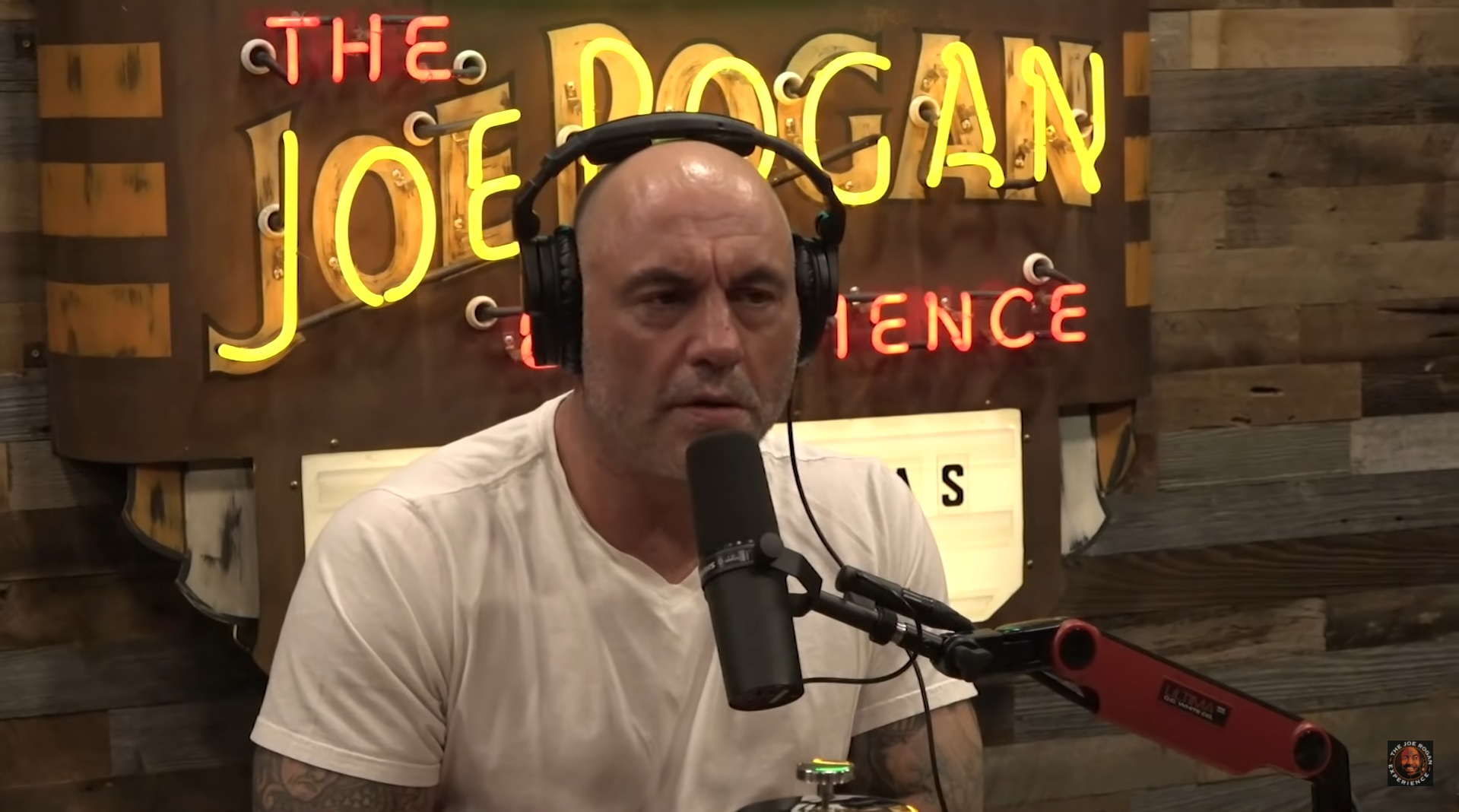
Why I Picked It:
- As a dynamic cardioid mic, the SM7B delivers amazing performance when paired with a mid-range pre-amp. I found that I was able to use this mic for both loud voiceover performance pieces while still retaining the character of a performance when recording at normal speaking volumes.
- The directional field on this dynamic microphone is tight enough to block out unwanted background noise, but it’s not so tight that I had to be exactly dead center the entire time I was recording. This gives more freedom to move about for performances without taking away from the sound.
- This mic is a classic in the broadcast industry, and I really like that it’s designed to work well with an articulating arm mount. Once again, this offers more flexibility in placement and performer positioning.
Who It’s For: the Shure SM7B is a wonderful option for voiceover artists and vocal performers who use dynamic microphones while still capturing a detailed sound. I would recommend this mic to anyone in the voiceover industry, including beginners, as it is a great all-around unit that offers a classic sound that can be heard across the world in professional broadcast environments. It’s also a great microphone for vocals in music too.
Watch this video review by Crosstalk to learn more about the Shure company and recommended additional equipment.
8. Rode Procaster →
XLR, dynamic, tight polar pattern
The Procaster is a perfect fit for YouTube videos, long narrations, and audiobook recordings.
This model offers a tight polar pattern and tailored frequency response. It’s a robust voice over mic with excellent noise reduction. The high-output dynamic capsule ensures its top qualities as a broadcast and voice over microphone.
It also comes with a built-in pop filter to minimize plosives.
Why I Picked It:
- The frequency response on the Rode Procaster is tuned specifically to enhance the range of the human voice. During testing, I definitely noticed that Rode went to great lengths to find the right roll-off frequencies. The bottom end drops off after 75Hz, and the top end maxes out at 18kHz.
- Although suited best for voiceover work, I tried this mic on some instrumental recordings and was satisfied with the results. It makes for an excellent room mic, but I was also able to get good results on guitar and bass cabinets.
- This mic’s low-impedance output controls character and gives options for placement, making it an essential piece of recording gear for voiceover artists who need to record in different spaces during a project.
Who It’s For: voiceover artists who are looking for dynamic microphones specifically crafted to enhance the human voice will want to get their hands on the Procaster. I also think that podcasters could benefit from the Procaster because it can elevate voices and give them a professional sound without much post-production work needed. Audio engineers would also want to give this mic a try for recording in dynamic environments, including drum rooms.
9. Heil PR-40 →
XLR, dynamic, cardioid
The Heil PR 40 is a dynamic studio recording mic designed for multiple pro applications, including live recording and commercial broadcasting.
This model boasts a really wide frequency range and beats most condenser microphones in this regard. It addresses huge amounts of SPL and also caters to natural voice articulation.
Why I Picked It:
- Heil designed the PR-40 with a flat response, and this works really well for capturing an uncolored, natural sound. This is a benefit not only to audio engineers and sound designers, but also to voiceover artists who want to craft a specific sound in post.
- This mic also rolls off muddy lows and harsh highs between 28Hz and 18kHz. I felt like this specific tuning worked perfectly with my voice during testing, and the lack of coloration gave me more freedom to focus on the performance instead of trying to balance out highs and lows.
- I also fell in love with the looks of this mic. It features gold and chrome plating on some models that just oozes sophistication, craftsmanship and attention to detail.
Who It’s For: this mic is the perfect addition to the cabinet of any sound design professional due to the flat response and ability to shape the character of a recording in post. I would also recommend the Heil PR-40 for voiceover artists who work best when they are able to act naturally without thinking about changing a performance to suit a specific sound.
10. Electro Voice RE-20 →
XLR, dynamic, cardioid
The RE20 dynamic cardioid mic is considered an industry standard, employed by sound engineers and music producers across the globe.
It comes with a heavy-duty internal pop filter which does a great job for close-in voice recordings, as well as an internal shock mount for noise reduction.
Why I Picked It:
- The low end response on this mic is fantastic. At 45Hz, bass tones really add depth, character and power to a vocal take, and the RE20 really capitalizes on this.
- I love the addition of Electro-Voice’s Variable-D technology as it reduces proximity noise, giving me a cleaner recording without the need for a lot of post cleanup. I tested this mic in both studio spaces and in crowded environments, and I could hear the difference the Variable-D technology made in keeping the focus on my voice each time.
- The RE20 includes a large diaphragm and bass roll-off control for superior sculpting of vocal characteristics. These two features made it easy to get professional results in my studio at home as well as in a professional vocal booth.
Who It’s For: voiceover artists who are looking for power and a real advantage in the low end will love this mic. The RE20 tackles the tough parts of keeping mud at bay, but at the same time, this mic delivers a clear and concise high end without frying vocal parts. I would also recommend this mic to podcasters and YouTubers who want to get a the sound of a professional broadcaster without shelling out big bucks for a high-end mic.
Mid-range condenser voice over microphones
The previous mics were moderately priced and quite suitable for most VO recording tasks. Now let’s get into something more posh and sophisticated.
Condenser mics have always been a perfect fit for studio recordings, and for good reason. Thanks to its lightweight diaphragm, a condenser microphone follows sound waves more precisely than its dynamic sibling. Of all types, condensers reveal the widest frequency range, clear transients and greater sensitivity.
That said, reasonably priced condensers may be well-suited for advanced home users, amateur musicians, and voice over talents that need to upgrade their existing devices. Pick a condenser for semi-pro or pro applications and studio use — you can’t go wrong.
Simply put, these are great microphones for recording vocals, voice over work, audio narration, and more.
Without further ado, let’s move on to the mid-range roundup.
11. Neumann TLM 102 MT – My choice among mid-range mics →
XLR, condenser, cardioid
The TLM 102 is a smart condenser choice, compact, good looking, and a great value for the money. It features a new large-diaphragm cardioid capsule that allows for a maximum sound pressure level of 144 dB. This allows for very high-output recordings.
For acoustic instruments, the Neumann TLM102 offers a fast transient response, but the best applications for this mic are vocals and voice overs. It comes with a built-in pop screen to remove plosives and a stand mount for increased stability.
The reasonable price and flexibility make this device a great fit for home recording and project studios.
Why I Picked It:
- Right away, I noticed that Neumann made it a point to accentuate top-end sounds when recording with the TLM 102 MT. My voice sounded natural and solid, but this mic brought out a rich, bright character that I don’t hear very often with voiceover mics.
- I think that TLM 102 MT is sleek and sophisticated in design and appearance. I found myself really drawn to this mic’s classic look as it harkens back to the days of stand-up broadcasts and radio plays that relied heavily on the vocal performances of the artists.
- The Neumann TLM 102 MT includes an integrated pop filter, and I found that this was a welcome addition not found on most mics. During testing, I was able to achieve a full sound without excessive plosives or sibilants as a result of Neumann’s innovation.
Who It’s For: I believe the Neumann TLM 102 MT does a great job at capturing clarity in vocal performances, but it really stands out when capturing higher frequencies. That’s why I would recommend this mic to voiceover artists who have voices that perform best at higher octaves or that don’t require additional bass. Studio engineers can also benefit from having a TLM 102 MT in the mic cabinet for recording piano and stringed instruments that need some extra sparkle.
Watch a Podcastage review and audio test of the Neumann TLM 102. The reviewer checks the mic’s various aspects and applications, and reveals why the TLM 102 may be your perfect choice for VO work.
12. Rode NTK →
XLR, condenser, cardioid
A large diaphragm condenser with a great warm sound, the Rode NTK is a nice choice for those who prefer it real loud.
Devoted users also cite the broad dynamic range and durability of this mic. Similar to other tube microphones, you need to warm it up for a while so it performs its best.
Make sure you turn it on and keep it on standby for 20-30 minutes before recording an audio lecture.
Why I Picked It:
- The Rode NTK features valve circuitry, adding warmth to vocals and instruments alike. During testing, I really liked how even in a vocal booth, my voice came across with an analog tape quality reminiscent of the classic mics of the 1960s.
- When it came to testing for frequency response, I was pleasantly surprised to find that, although the Rode NTK focused on warm tones overall, it did deliver on the company’s promise of full-spectrum frequency response.
- This mic includes the addition of a gold-plated 1” diaphragm, and this combines well with the Class A circuitry and graded 6922 twin-triode valve to improve performance in terms of sound reproduction.
Who It’s For: both voiceover performers and studio engineers can turn to the Rode NTK for recording when the job calls for added warmth. I wouldn’t really recommend this mic for broadcast professionals or podcasting because it may take attention away from vocal detail, but I think it would be suited well for recording engineers who need to capture ambient sounds or for mic placement to create reverb effects.
Professional Microphones
In this high-end category, I cover the outstanding mics used by artists, musicians, broadcasters, and other voice professionals. Quality voice recording encompasses a slew of characteristics, and pro mics match them all in one way or another: crystal-clear sound, responsiveness, broad-spectrum, dynamics, and more. If you are serious about your sound, welcome to the world of professional gear.
Now, let’s get go through a few top models.
13. Neumann TLM103 – My choice among professional microphones →
XLR, condenser, cardioid
A golden choice in the music industry, the TLM 103 is a large diaphragm microphone for pro and semi-pro use. This is the best voice over microphone I’ve ever used!
The TLM 103 utilizes the classic transformerless circuit employed in many Neumann models, and combines top-notch noise reduction with high sound pressure levels. It’s a universal large-diaphragm cardioid with straightforward handling and very low self-noise.
The TLM also works efficiently against plosives and pop noises.
These characteristics make the mic suitable for a wide range of applications, from home recording to professional broadcasting and studio recording.
Why I Picked It:
- The capsule in the Neumann TLM 103 is derived straight from the classic Neumann U87, but at a greatly reduced cost. This gives the TLM 103 a classic sound that is well-known in the broadcast and voiceover industries without the need for a huge budget.
- When I tested the TLM 103, I noticed that it really shined when I focused on the top end of the frequency spectrum. My voice sounded clean and clear, but there were no harsh overtones or buzzing.
- I also loved the dynamic range of the Neumann TLM 103. I was able to achieve fantastic results using this mic to record everything from radio spots to narration at different volume levels without a bit of loss in character or detail.
Who It’s For: I would recommend the Neumann TLM 103 to professional voiceover artists who either don’t want to spend a lot for a Neumann U87 or who want the Neumann sound in a modern mic. This mic is also a good choice for home studio recording enthusiasts who are seeking a budget-friendly alternative to more expensive broadcast mics.
Here’s a interesting comparison of the Neumann TLM103 and the CAD e100 from Mike DelGaudio. See how these two popular models stack up against one another and make up your mind.
14. Sennheiser MKH416-P48U3 →
XLR, condenser, shotgun
The Sennheiser Mic is used in professional studios and is dubbed as the “gold standard.” A great choice for road trips and outside recordings, the Sennheiser is a classic directional shotgun mic: rugged, lightweight, and user friendly.
Equipped with feedback suppression, it delivers superb sound quality and ease of use.
Why I Picked It:
- The Sennheiser MKH416-P48U3 is excellent at capturing clear vocals on set while still recording natural ambiance. This makes it an essential piece of gear when you need to a mic for vocal work in a crowd.
- During testing, I found that this mic rejects feedback for clear audio in monitoring environments. I didn’t run into any problems, even when I had monitors nearby, and I didn’t notice any feedback in post-production.
- I also like that the Sennheiser MKH416-P48U3 features high directivity to capture the right audio source. All I had to do was re-position the mic when a scene changed an I was able to easily target the right vocal performer without sacrificing sound quality.
Who It’s For: the Sennheiser MKH416-P48U3 is really a specialty mic that is designed for film, television and live broadcast environments, so I would only recommend it for on-set audio specialists. Voiceover artists might use this mic while working, but it isn’t really something that you would want to use in a vocal studio setting. On the other hand, you may find some use for the MKH416-P48U3 in a studio if you need to capture overhead ambiance for specialty vocal recordings.
15. Neumann U87 →
XLR, condenser, multi-directional
Professionals are full of praise for the Neumann U87 model. This exceptionally pricey mic supports three directional patterns: all-directional, cardioid and figure-8.
Neumann fans have a more affordable choice though. A lower option, the Neumann TLM103, also delivers great quality recordings. It fits the expectations of broadcasters and home studio owners.
This mic is extremely sensitive; users maintain that it renders emotions and nuances with great efficiency.
Why I Picked It:
- The Neumann U87 is a top-of-the line voiceover mic that has a long history in the world of broadcast and professional recording. I love the character of this mic, and it consistently delivers quality recordings with a tight frequency response tailored to the human voice.
- The depth and power provided by the U87 helps lowers tones really reach their potential, but it also shines bright on the top end.
- Using the Neumann U87, I have the ability to quickly choose between three classic polar patterns, including figure-eight, cardioid and omni. This provides options for solo, group and ambient recordings.
- The U87 also has a switchable bass roll-off that has been dialed in with the human voice in mind. It reduces mud while emphasizing lower registers for added character, tone and punch.
Who It’s For: the Neumann U87 is the mic I recommend most to professional voiceover artists who are having a hard time finding the right fit. This mic provides everything needed to bring out the best in any vocal performance, and studio professionals can also get a big boost in quality and clarity when using the U87 as a room mic. The price of the U87 is on the higher end, but the performance this mic provides is worth it when you need the best.
That’s it for the voice over microphones for now. Let’s see what additional gear you may need to help your mic of choice shine like a star.
Other must-haves for voice over recording
Watch this video and learn which equipment Israel Hyman, a voice over expert, suggests for home studio recording.
Headphones →
A good set of headphones are essential for you to monitor audio tracks while recording voice overs.
It’s important to use headphones for monitoring, because you want to prevent your mic from picking up sound from the speakers. Otherwise, it’ll cause a bad-sounding feedback effect.
When recording voice overs, make sure you are in a quiet room and wear headphones.
If you need to pick one model, my recommendation here is the Sony MDR7506. Perfectly flat sound, clear mids and highs – you can’t go wrong with this one. For more details, check out my article on headphones.
Microphone stands →
To avoid shakiness and sound disruptions, use a mic stand that suits your facilities and preferred position. If you’ll be sitting when recording voice overs, it makes sense to pick a desk stand or a studio arm. A desk stand is a smaller, desktop alternative to a standard microphone stand. A studio arm can be attached to a table with a removable clamp or fixed holder.
If you prefer standing, your best option is a microphone floor stand, a longer model with boom arms. The latter will provide more flexibility in choosing the right angle and position for the mic.
Here are my recommendations in each category:
- Arm stands: NEEWER. A durable and convenient model that you can easily fold and carry around if needed. It’s also very easy to set up. Smart pick!
- Floor stands: Samson MK-10. A sturdy tripod boom stand that comes with a mic clip. Very lightweight, easy to transport. Make sure to check it out!
- Desk stands: On Stage DS7200C. Solid solution for voice over talents and podcasters; comes with an adjustable height. Sturdy and ergonomic.
Pop filters →
Basically, pop filters serve to improve your speech flow.
When using sensitive microphones, it’s essential to avoid the plosives and sibilant sounds that may be picked up by the mic. That’s exactly the job for a pop filter – a compact screen that connects to a microphone stand with a clamp.
You can position the filter right in front of the microphone capsule and it will help diffuse the air generated by the notorious P’s and T’s. Depending on the model, the screen can be metallic or made of a nylon fabric. I recommend using the Dragonpad USA Pop filter. Cheap and cheerful, it comes with a 360-degree flexible gooseneck. It’s easy to use and set up, and works great.
Another job of a pop filter, when used with a condenser microphone, is to protect the capsule from tiny particles of saliva that inevitably fly out when you speak. Longer contact with moisture will corrupt the sensitive capsule.
As for dynamic microphones, most of them already come in a protective capsule that has a foam pop-filter that goes in between the protective metallic grid and microphone capsule. Plus, the capsule on dynamic microphones is more tolerant to moisture. However, an extra layer of pop filter on a gooseneck may be helpful.
Shock mount →
A shock mount is a suspension device that prevents a mic from picking up rumbling sounds from the desk or floor. It’s mounted on the end of a microphone stand and holds the mic.
Voice over talents may use a shock mount to suspend a mic with special bands, thus absorbing most unwanted noises. The type of shock mount totally depends on the particular microphone.
Sometimes shock mounts are bundled with the mic. If you need a standalone device, I recommend you check out Neewer. This shock mount isolates most condenser mics and offers smooth angle adjustment. With a durable metallic structure, it’s a great option for broadcasting and voice overs.
Microphone preamps →
As a rule, your mic’s output is way too low to connect it directly to a recorder or audio interface. In order to amplify the sound, i.e. make it louder, I recommend you use a preamplifier.
Preamps come in all sorts and shapes: internal and external, single channel and dual channel, solid state and tube. The important thing is to get the most out of your gear and deliver better gain, less distortion, and hopefully the desired sound character.
With a preamp like the Focusrite ISA One, this is a simple task. This model is a classic one-channel pre with an independent D.I., switchable impedance, balanced input and output, VU meter, and more. Belonging in the mid-range category, the ISA One does its job just right, and produces a clear well-weighed sound with impressive headroom.
Long story short, you can’t go wrong with the Focusrite!
Want to learn more about preamps? Check out my dedicated article!
Audio interface →
Audio interfaces are external equipment that connects to computers via USB or other ports (USB-C, FireWire). Need to plug an XLR microphone into a computer? An audio interface is the solution.
Many interfaces include various inputs such as XLR and instrument input jacks (usually combined) as well as outputs, such as headphones and speakers. All interfaces that have an XLR input have a phantom power switch and a built-in preamp (which is decent for most tasks). Also, most interfaces let you monitor the sound you record directly.
My recommendation for a USB interface is the Focusrite Scarlett Solo (2nd Gen) a great mic preamp that comes with embedded phantom power. Best-in-class conversion rates, universal compatibility.
XLR Cable →
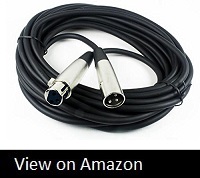
I suggest using 25-foot mic cables – long, thick, and durable. Naturally, you should choose a good length for your setup, but too long is always better than too short. A good choice in this field is the Mogami GOLD STUDIO-25 XLR Microphone Cable. It’s cheap, sturdy and built to last. This is the type of thing that you set and forget.
Isolation filter →
This is, essentially, a curved baffle covering the microphone with acoustic absorption materials; it’s a smart way to decrease room ambience. An isolation filter surrounds the back part and sides of a mic and absorbs unwanted echo, but at the same time leaves the subtle ambient echo, which is not bad at all.
Most filters of this sort are not exactly lightweight, so you’ll probably need a robust microphone stand as well.
What’s my pick in this category? I recommend LyxPro VRI-30. This is a portable and adjustable foam microphone isolation shield for stand mount or desktop use. Comes with steady feet and a one-year warranty for your peace of mind. All in all, it’s a real deal!
Acoustic panels →

They are good for studios, vocal booths, control rooms, and other recording environments. Actually, they’ll work great anywhere to help prevent echoes inside the room.
Product care may include occasional vacuum cleaning for better results. The item I have in mind here is Soundproofing Acoustic Studio Foam, 4 Pack. These panels are composed of two-inch wedge foam and provide moderate noise deadening where required. Good value for the money. Highly recommended!
Don’t overuse acoustic panels, otherwise your voice will sound very dry and unnatural.
Studio monitors →
Unlike headphones, monitors reproduce a more natural sound for critical listening, because the sound source isn’t that close to your ears.
Studio monitors are an immense upgrade as opposed to common computer speakers or HiFi. Regular speakers and stereo systems tend to alter the sound to make it more appealing, whereas monitors give you a better idea of your recording quality. Monitors are capable of a flat frequency response so you can hear frequencies exactly as they’ve been recorded, and make tweaks accordingly.
My recommendation: Yamaha HS7 100-Watt. This is a two-way powered studio monitor with a 43Hz–30kHz frequency response, room control and high trim response, XLR and TRS phone jack inputs, and more great features. This mid-priced Yamaha model is a real bang for the buck!
For more choices, refer to my article on studio monitors.
Software →
Well, this is not exactly equipment, but you will surely need software to manage your recordings. There is an enormous selection of audio editors, so take your pick. Before you look into the pricey options, check out the open-source Audacity software. It’s a comprehensive multi-track audio editor and recorder that works on all major OSs: Windows, Mac OS X, and GNU/Linux.
Among the major professional offerings, take a look at Adobe Audition CC, a workstation for audio pros that helps you design sound effects and edit audio. It’s a Swiss army knife that includes a multitrack, waveform, and spectral display for recording, mixing, and editing audio.
Need more information?
Check out Mike DelGaudio’s YouTube channel, which covers voice overs, home studio recording, and equipment.
A Final Word About Voice Over Microphones
If you’re looking to purchase a microphone for voice overs or other recording tasks and can’t decide which one to get, hopefully this guide helped you out. Whether you’re a seasoned pro or a beginner taking online voice over classes, the mics in the guide above are just what you’re looking for.
If you ever get a chance, try renting a voice acting mic and test it in your actual recording environment for a couple of days to see if it’s what you need. After all, there’s no true substitute for testing out microphones and figuring out which one sounds best with your unique voice.
Your optimal mic is the one that makes your unique voice sound great – don’t forget about that and don’t get carried away with bells and whistles.
“Go with personal preference. Trust your ears,” Proctor said.
And you may even want to consider taking public speaking classes online to become a better speaker and get more from your setup.
Jot down a list of essential features to meet your specific tasks. Wipe out the unneeded extras, and there you go.
You can’t just be satisfied with the first voice over mic you encounter. Like any creative pro, you need the ability to tweak and tune, and possibly produce a couple of test lectures.
You may even wish to install some acoustic foam panels on the walls and/or ceiling in your recording space to further improve the quality and clarity of your recordings.
Be picky but don’t overplay it. After all, your voice is only as good as your content.
Have any questions about choosing a voice over mic? Leave us a comment and we’ll try to help you out.
- Elevating Your Virtual Presence: Why EMEET’s SmartCam S800 Stands Out in Modern Communication - 06/04/2025
- US Teachers Will Spend $3.35 Billion of Their Own Money on Classroom Expenses in 2025-25 School Year - 06/04/2025
- Report: Leveraging AI Tools Could Help US Teachers Avoid $43.4 Billion of Unpaid Overtime Work - 06/04/2025
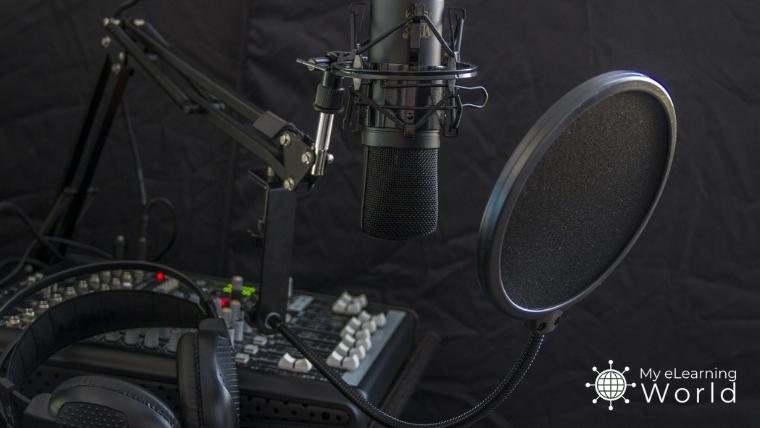



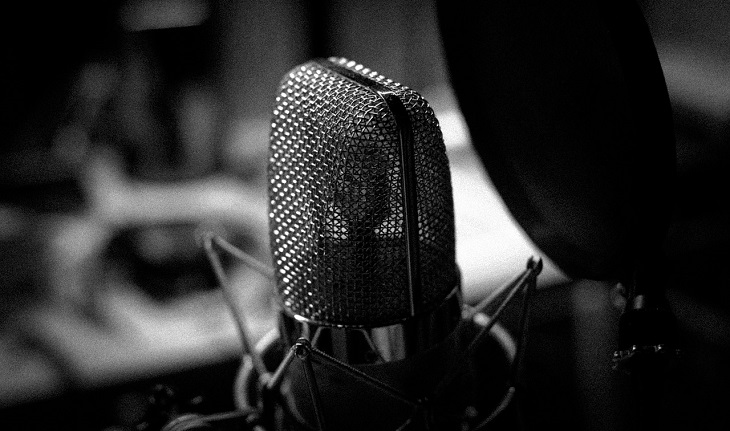



















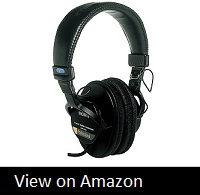


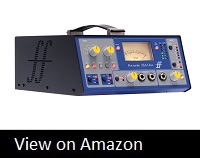
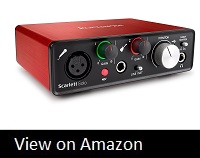
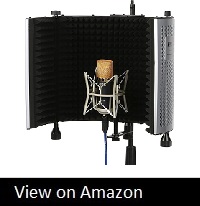
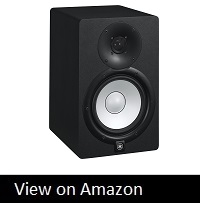
I’m trying to find the right mic. for my tenor voice. Please, guide me. Thank you!
Marcos, I know the Neumann models are good for tenors. The Neumann 105 delivers good quality and fits higher male voices. If you are after a mic for studio use only, take a look at the Neumann 102
delivers good quality and fits higher male voices. If you are after a mic for studio use only, take a look at the Neumann 102 , which provides a very natural sound. Hope that helps!
, which provides a very natural sound. Hope that helps!
Nice to see Tom Olsen in the video! Indeed, Blue Microphones Spark for $200 really rocks. I don’t know why anyone would waste so much money chasing $1-2 grand options and questionable benefits. Well, unless you can really hear the difference…
for $200 really rocks. I don’t know why anyone would waste so much money chasing $1-2 grand options and questionable benefits. Well, unless you can really hear the difference…
Stan, yes, people can hear the difference. Low-cost condenser mics might be fine for beginners, but they don’t deliver half the quality required for voice acting and high-end studio recording. Good sound comes at a price.
Hi Scott, my apologies, this is a late reply, to an old post, but it’s a very useful post… So helpful to have you share your experience in this area. May I ask, is there a mic that you recommend for a mid-range female voice?
Hi Jill, I’ve seen some nice options recommended for female voices. One of those is the Shure SM7B Vocal Dynamic Microphone (clean reproduction, good fit for the mid-range, comes fully equipped with extras). You may also try the Audio-Technica
(clean reproduction, good fit for the mid-range, comes fully equipped with extras). You may also try the Audio-Technica (AT4033/CL Cardioid Condenser Microphone) – great value for the money, smooth sound, widely tested in recording studios.
(AT4033/CL Cardioid Condenser Microphone) – great value for the money, smooth sound, widely tested in recording studios.